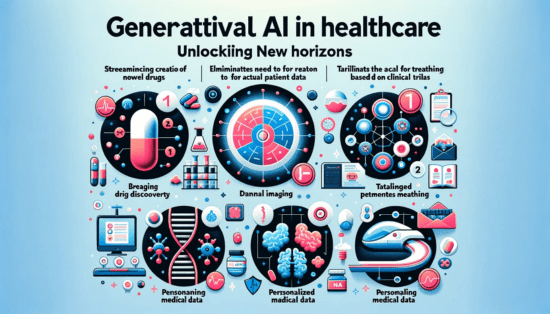When ChatGPT impressed everyone with its ability to understand plain English questions and appropriately respond, it marked a new milestone in the development of artificial intelligence tools that can actually improve our lives. The idea of an on-demand advisor that can sit on top of all of the knowledge in human history to date and search it for the best possible answer to our questions is mind-blowing. After all, if you ask an expert, they can provide a great response but they probably have not reviewed every relevant article or know about all of the minute details that no expert can completely be aware of. As such, this signaled a breakthrough in our quest to use AI to gain better insights into our world and our bodies.
The promise of AI to improve health and healthcare is not new. For at least a decade, this has been a topic of speculation and research. We have long suspected that AI can help us do better and faster research to find the causes of diseases and better treatments. Some 700 AI applications have been cleared by the FDA to be used in healthcare. Yet, even those of us who are doing this full-time have a hard time of naming a few AI applications that have gained widespread adoption. Part of the explanation for this slow adoption is the fact that much of the data in healthcare is unstructured and if you are going to be a tool that helps in better diagnosis or treatment selection, you need to be able to use that data. It is estimated that 80% of the healthcare data is unstructured, meaning that it’s in a narrative format and not in discrete fields like lab results or genetic data .
Why is unstructured data an issue for AI? Well, structured data is easier to analyze. It is easier for any analytic tool, including machine learning, to find patterns in data that is well-organized in a tabular format, cleaned up, and with known structure. When the data is in a narrative format, there’s less structure and finding the relationships is not as easy. Also, narrative data contains meaning and intentions, which is hard to discern for AI. There are methods in AI that aim to solve for this issues. Natural language processing (NLP) is a discipline within AI that tries to extract key concepts out of the written or spoken words, or find the meaning conveyed by the speaker or the author. Historically, this has been more difficult to do than analyzing structured data. Examples of a structured data file are an MRI image where the entire data is digitized and the findings are in the form of different patterns in that digital data. However, if there’s a radiology report that describes the findings that the radiologist saw on that MRI image in sentences, you need NLP to analyze this.

Since healthcare data is in both structured data like the MRI images and the unstructured data like the MRI report or clinical notes that the doctors write, having accurate NLP is essential to effectively use AI in healthcare. Until recently, NLP tools in healthcare have been less than ideal. Why? Clinical note and narrated reports in healthcare lack a standardized format and everyone does it the way they like. There has not been (and still is not) any standards for these types of notes or reports to make them more ready for analysis. As such, in spite of lofty claims by different groups, analysis of unstructured data in healthcare has fallen short of expectations.
This is where generative AI and the large language models (LLMs) may represent a new day for AI and healthcare. What ChatGPT and other large language models represent a major leap in the ability to analyze unstructured data. This is true across the board, including healthcare. Early experience with these tools shows that they can significantly improve our ability to analyze unstructured data in healthcare and launch new capabilities. This can include smart chatbots that can answer questions and direct people to the right resources, summarize the latest medical insights for the clinicians, follow voice commands by nurses and other staff, and more.
My bottom line on this is that we’re seeing a lot of promise with this significant improvement in the capabilities of the NLP and it is especially salient in healthcare where NLP has not done as well as other industries so far and where it is desperately needed. However, a word of caution: Until we actually see the performance of these tools in the real world and make sure that they are living up to our expectations, we can’t celebrate yet. We have been down this road before: major promise for a technology that should’ve delivered major automation and intelligence for health applications, but never lived up to the hype. In the next few posts, I’ll examine some of the areas where generative AI is eyed to make a major contribution in healthcare.






